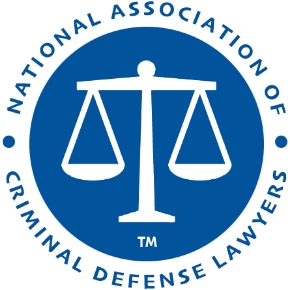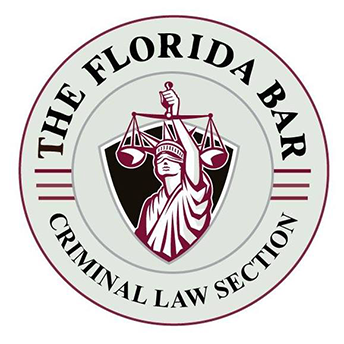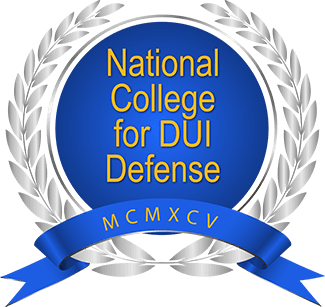Leaving the Scene of a Crash Involving Death
Florida Statute Section 316.027 prohibits leaving the scene of any crash when a person involved in the accident dies as a result of their injuries sustained in the crash. The crime of leaving the scene under § 316.027(2)(c) is classified as a first-degree felony punishable by thirty (30) years in Florida State Prison.
Pursuant to Section 316.027(2)(e), a conviction for leaving the scene of a crash involving death requires that the driver’s license is revoked for at least three years as provided in Section 322.28(4).
To establish the crime of leaving the scene of a crash with death, the State need only prove that the defendant left the scene of a crash which resulted in death—not necessarily that the defendant caused the death. In fact, § 316.027(2)(c) only requires that the crash “results in the death of a person.”
Additionally, the State is not required to prove that the defendant knew or should have known (from the nature of the ‘crash’) that a fatal injury had occurred. Instead, the prosecutor must only show that the driver had knowledge that an injury occurred as a result of the crash.
In State v. Dumas, 700 So. 2d 1223, 1225-26 (Fla. 1997), the Florida Supreme Court explained that “[t]he fact that a death rather than an injury has occurred does not trigger a different set of duties [under the statute]. Thus, the knowledge element that triggers the affirmative duty is the same in each circumstance, but the sanction imposed is determined by the results of the accident.”
You might be charged with this crime, even if you were NOT at fault for the accident. Instead, the statute requires any person driving a vehicle involved in a traffic crash to stop at the scene of an accident and remain there until he has fulfilled the requirements of 316.062.
Attorney for Leaving the Scene with a Death in Tampa, FL
If you were involved in a crash and left the scene, contact an experienced criminal defense attorney at Sammis Law Firm in Tampa, FL. The penalties for leaving the scene largely depend on factors that are not within your control – whether a person was seriously injured or killed as a result of an accident.
The law is unforgiving and the penalties are extremely harsh. Don’t compound your first mistake. If you made the mistake of leaving the scene, then a criminal investigation has already begun. You have the right to remain silent and to have an experienced criminal defense attorney represent you at every stage of the case.
Don’t speak to a law enforcement officer. Don’t destroy your vehicle or get it repaired. Don’t talk to anyone at your insurance company about what happened. Before you do any of those things, immediately seek out the services of an experienced criminal defense attorney who can help you make sure that you do everything correctly and that your rights are protected.
The attorneys at Sammis Law Firm are experienced with traffic homicide investigations in Florida. We understand how important it is to act quickly to begin your defense even if you have not yet been charged with any crime.
We are experienced in fighting to protect our clients accused of leaving the scene of a crash in Tampa, FL, and the surrounding areas throughout the greater Tampa Bay area.
Call (813) 250-0500 today.
Elements of Leaving the Scene with Death under § 316.027(2)(c)
To prove the crime of Leaving the Scene of a Crash Involving Death, the State must prove the following four elements beyond a reasonable doubt:
- The defendant was the driver of a vehicle involved in a crash occurring on public or private property resulting in the death of another person;
- The defendant knew that he or she was involved in a crash;
- The defendant knew, or should have known from all of the circumstances, including the nature of the crash, of the injury to or death of the person;
- The defendant willfully failed to:
- stop at the scene of the crash or as close to the crash as possible and remain there until he or she had given “identifying information” to the injured person, driver, occupant, or person attending the vehicle and any police officer investigating the crash; or
- render “reasonable assistance” to the injured person if such treatment appeared to be necessary or was requested by the injured person.
If the State proves that the defendant willfully failed to give any part of the “identifying information” or willfully failed to give reasonable assistance, the State satisfies this element of the offense.
The jury instructions for leaving the scene of a crash involving injury, serious bodily injury or death are found in Chapter 28.4 based on § 316.027(2), Fla. Stat.; § 316.062, Fla. Stat.
A driver who willfully leaves the scene of an accident involving death commits a felony. § 316.027(2)(c), Fla. Stat.
Lesser Included Offenses of Leaving the Scene of a Crash with Death
Is leaving the scene of a crash involving injury a lesser included offense of leaving the scene of a crash involving death? In Williams v. State, 732 So.2d 431 (Fla. 2d DCA 1999), the court stated in dictum that Leaving the Scene of a Crash Involving Injury is a necessarily lesser-included offense of Leaving the Scene of a Crash Involving Death.
The courts have also found that there is no issue that a person was killed as a result of an incident giving rise to criminal charges, non-death lessers are not appropriate. See, e.g., State v. Barritt, 531 So.2d 338 (Fla.1988); Humphrey v. State, 690 So.2d 1351 (Fla. 3d DCA 1997).
Definitions in Leaving the Scene Crimes
As explained in Gaulden v. State, 195 So. 3d 1123 (Fla. 2016), a vehicle is “involved in a crash” if it collides with another vehicle, person, or object.
Under § 316.003(75), Fla. Stat., the term “vehicle” is defined as any device in, upon, or by which any person or property is, or may be, transported or drawn upon a highway, except devices used exclusively upon stationary rails or tracks.
Under § 316.062, Fla. Stat., the term “identifying information” is defined to mean the name, address, vehicle registration number, and, if available and requested, the exhibition of the defendant’s license or permit to drive.
The term “reasonable assistance” includes carrying or making arrangements to carry the injured person to a physician or hospital for medical treatment as explained in Patterson v. State, 512 So. 2d 1109 (Fla. 1st DCA 1987).
The term “willfully” means knowingly, intentionally and purposely.
The Difference Between Vehicular Homicide and Leaving the Scene
The difference between vehicular homicide and leaving the scene of a crash with death, is that vehicular homicide requires reckless operation of a vehicle, but leaving the scene of a crash with death does not require that the vehicle be operated in any particular manner. Compare § 782.071(1)(a)(vehicular homicide), with § 316.027(2)(c) (leaving the scene of a crash with death).
In other words, to establish the crime of leaving the scene of a crash with death, the State need only prove that the defendant left the scene of a crash which resulted in death—not that the defendant caused the death. § 316.027(2)(c) (requiring only that the crash “results in the death of a person”).
Moreover, leaving the scene of a crash with death also requires that a defendant willfully leave the scene of a crash, whereas vehicular homicide has no such element. Compare § 782.071(1)(a), with § 316.027(2)(c).
The two offenses are not degrees of the same offense nor is one a lesser offense subsumed by the greater offense. McCullough v. State, 230 So. 3d 586, 592 (Fla. 2d DCA 2017).
Administrative Suspension for Leaving the Scene with Death
Under §322.27(1)(a), a driver’s license may be suspended without a preliminary hearing upon a showing of its records or other sufficient evidence that a licensee “has committed an offense for which mandatory revocation of license is required upon conviction.” You can request a show cause hearing if this type of suspension was issued in error or if the charges are later dropped.
In fact, the driver’s license suspension is mandated by Florida Statutes § 316.027 and § 322.26 upon the notification by the Florida Department of Highway Safety and Motor Vehicles (DHSMV) of the conviction for failure to stop and render aid after his motor vehicle crash involving injury or death. The statute provides:
Mandatory revocation of license by department. — The department shall forthwith revoke the license or driving privilege of any person upon receiving a record of such person’s conviction of any of the following offenses: . . .
(4) Failure to stop and render aid as required under the laws of this state in the event of a motor vehicle crash resulting in the death or personal injury of another.
Id. at § 322.26(4); see also id. at § 322.27(2).
When a licensee has committed an offense that requires mandatory license revocation upon conviction, the DHSMV has both the authority to revoke or suspend a driver’s license and to modify such revocation or suspension. Fla. Stat. §§ 322.27 and 322.271.
Fleeing the scene of a crash involving death or bodily injury is an offense that requires any convicted driver to have his driver’s license revoked. Fla. Stat. § 316.027(2).
After a license suspension or revocation, a licensee may request early reinstatement of his license for business or employment purposes and may show that the suspension or revocation causes a serious hardship. Fla. Stat. § 322.271. The DHSMV will investigate the applying licensee’s qualification, fitness, and need to drive. Id.
If a conviction occurs, then pursuant to Section 316.027(2)(e), the court must revoke the driver’s license for at least three years (beginning on the date the sentence is imposed) as provided in Section 322.28(4).
This article was last updated on Wednesday, October 27, 2021.














